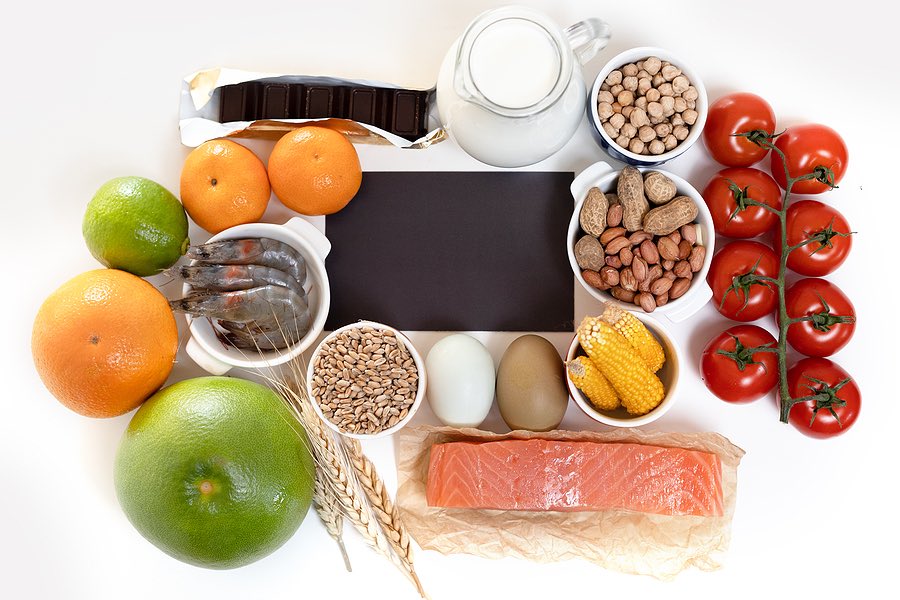These days, we hear a lot about how we’re surrounded by chemicals and toxins. Everywhere you turn, there seems to be something to worry about. There are chemicals in the food we eat, the water we drink, the air we breathe, the products we use regularly on our bodies and in our homes… I completely understand how overwhelming it can be. After all, we can’t eliminate chemical exposure entirely. And it can feel like every time we tackle one source of exposure, a new one pops up in its place. It’s like a never-ending game of environmental whack-a-mole!
So, what should we do? One thing that I think is really important is understanding different kinds of chemicals, what they actually do when they enter our bodies, and what simple, meaningful actions we can take in order to lessen our burden.
Some of the most pervasive and problematic chemicals found in our environment, especially for women, are a category of chemicals called xenoestrogens (literally “foreign” estrogens). Basically, a xenoestrogen is any foreign chemical that is close enough in structure to the sex hormone estrogen that it can mimic it when it enters the body, and bind to receptor sites that should be reserved for the estrogen we actually produce and need.
Xenoestrogens, which include things like BPA, parabens, phthalates, pesticides, and preservatives, are found in all kinds of products that we’re regularly exposed to. They have the effect of increasing estrogen levels in the body over time, which can lead to or exacerbate estrogen dominance and lead to a number of different health concerns in women, men, adults, and children alike.
I often find estrogen dominance behind stubborn hormonal symptoms and problems, and although xenoestrogens are not the only factor that contributes to this imbalance, they are one among the big ones! By becoming more aware of where xenoestrogens are coming from in our everyday life, we can take steps towards minimizing our exposure and rebalancing our hormones and our health.
Estrogen Dominance: It’s All About Balance
Let’s start with a brief overview of what estrogen dominance is, because I see a lot of confusion and misconceptions about this in my practice and even in the media!
First of all, estrogen is, of course, an extremely important hormone for women (and for men). We need adequate estrogen for our brains, hearts, bones, and reproductive health, to name a few.
As is the case with so many things when it comes to our health and our lives in general, it’s all about balance. We need different hormones for different things, and they all work together in a series of complex ways.
Estrogen works especially closely with progesterone, and when estrogen levels are too high in relation to progesterone levels, it’s called estrogen dominance. A lot of women think that estrogen dominance is just high levels of estrogen, but really, it’s an imbalance between estrogen levels and progesterone levels (which also tends to mean a bunch of other hormonal imbalances).
This is really important to understand, because when we’re going through perimenopause, our estrogen levels naturally decrease, and can sometimes get very low. Still, I see a lot of estrogen dominance in this population! That’s because of the imbalance between estrogen and progesterone (which also decreases in this stage of life). In other words, you can have low estrogen levels, and still have estrogen dominance.
Symptoms of Estrogen Dominance
Symptoms of estrogen dominance may include fatigue, depression, anxiety, mood swings, low sex drive, irregular periods, PMS, bloating, swollen breasts, brain fog, insomnia, and weight gain. Estrogen dominance is also a common cause of PCOS, endometriosis, fibrocystic breasts, and breast and uterine cancers.
When estrogen dominance occurs, I also tend to see a lot of other hormonal imbalances, like insulin resistance or an imbalanced DHEA and cortisol ratio.
Related article: How Hormones Affect Your Sex Drive (And What You Can Do About It)
Xenoestrogens Are All Around
Xenoestrogens accumulate in fatty tissue and are hard to eliminate through our regular detoxification system (the liver). They end up being stored in our fat cells, which can lead to weight gain or weight loss resistance.
An accumulation of xenoestrogens has been linked to conditions including breast cancer, obesity, infertility, diabetes, endometriosis.
There are other factors that can contribute to estrogen dominance, besides xenoestrogens. These can include chronic stress and adrenal fatigue, autoimmune conditions, gut health issues, and being overweight.
The thing is, even if the endocrine (hormone) system is doing everything right and producing the amount of estrogen we need at any given time, if we’re being exposed to an excessive amount of xenoestrogens, the amount of estrogen in our bodies is increasing past what our endocrine system has authorized, and an imbalance can occur or worsen.
Identifying common sources of xenoestrogens in our day-to-day lives– especially those that we have some control over– can be the first step towards restoring and maintaining hormonal balance, avoiding estrogen dominance, and feeling fantastic.
Common Sources of Xenoestrogens
We can’t completely avoid xenoestrogens, but we can definitely take steps to reduce our exposure. Here are some of the most common sources of xenoestrogens.
Note that for many of these products, like personal care and cleaning products, xenoestrogen-free alternatives are out there! Look for sustainability and health focused companies with ingredient transparency.
- Pesticides, herbicides, insecticides, and weed killers of all kinds
- Plastic water bottles
- Plastic food containers/Tupperware
- Fabric softeners
- Non-organic fruits and vegetables
- Non-organic meat and dairy
- Perfumes and other scented personal care products
- Skincare products and cosmetics (especially lower quality/drugstore brands)
- Sunscreens
- Cleaning products
- Nail polish
- Styrofoam cups
- Red dyes in food products
- Preservatives in food products
- Building supplies, paint
- Condoms
- Feminine hygiene products (tampons, pads)
- Linings of many food cans and containers
- Birth control pills
Tips for Combating Xenoestrogen Exposure
So, how can we take manageable, meaningful steps towards minimizing xenoestrogen exposure and finding hormonal balance?
Making a few key dietary and lifestyle changes, and sometimes adding supplements, are some of the best ways to avoid and eliminate xenoestrogens and help the body to minimize estrogen dominance and restore balance.
Here are some of my top tips for outsmarting these ubiquitous chemicals!
- Go organic as much as possible. The more you can choose organic and ideally locally grown fruits, vegetables, and meat and dairy products, the less of a pesticide (and therefore xenoestrogen) burden you’re putting on your hormonal system. This is especially important when it comes to meat and dairy products, as non-organic options will introduce hormones as well as pesticides.
- Cut way down on plastic. This is a good one in general for both you and for the environment! When it comes to xenoestrogen exposure, the main things you want to avoid are plastic water bottles, plastic food containers, and plastic wrap to store food. Switch to reusable glass or ceramic containers.
- Avoid microwaving or freezing food in plastic containers. Both extremes will cause more xenoestrogens to leak into your food and make your way into the body.
- Look for chemical-free cleaning products. This can be a gradual change, but one of the best things you can do is start to look for chemical-free alternatives to the cleaning products, laundry detergents, and dish soaps that you use regularly. Start with one item, and go from there!
- Look for chemical-free beauty and personal care products. Same advice goes for the products you put on your skin, face, and body! Gradually start to replace paraben and toxin-heavy products with cleaner, gentler, safer options that you can feel good about.
- Try essential oils instead of chemical-heavy fragrances. There are all kinds of great essential oils out there that smell beautiful and come without the harmful, estrogenic ingredients found in perfumes, room sprays, air fresheners, and even scented candles. Look for your favorite scents, from eucalyptus to peppermint to lavender, and start exploring the many benefits.
- Filter your water. A filter for your at-home drinking water is a great investment in your health, and one of the best ways to reduce xenoestrogen exposure every day.
- Switch to organic feminine hygiene products. I think it’s outrageous that most tampons and pads on the market are actually introducing xenoestrogens into our body and disrupting our hormonal health! Thankfully, a number of health conscious brands have emerged over the last few years offering organic, unbleached versions of these essential items, and many of them are available as subscriptions.
- Consider discontinuing hormonal birth control. Hormonal birth control (like “the pill”) can really throw your hormones out of whack, and can contribute to estrogen dominance. If you are currently using hormonal birth control and are experiencing symptoms of estrogen dominance or hormonal imbalance, speak with your practitioner about other options that may suit you. You can also ask your provider about adding micronized progesterone to the cycle when taking the birth control.
- Support xenoestrogen detoxification. No matter how many positive changes you make, there will still be some xenoestrogens making their way into your environment and your body. Because these chemicals are difficult to eliminate, it’s important to support their detoxification as much as possible. Sweating (through exercise, hot yoga, or sauna use) can help, as well as reducing stress and consuming antioxidants and antioxidant-rich foods. You can also help to support the liver’s detoxification process by eating plenty of cruciferous vegetables, taking NAC and getting enough B vitamins.
- Eat to combat estrogen dominance. There are a number of very healthy, whole foods that contain the estrogen-balancing compound indole-3-carbinol (i3c), including broccoli, cauliflower, cabbage, bok choy, turnips, and cabbage. Other foods that can help to combat estrogen dominance include nuts, seeds, wild caught fish, kale, and brussels sprouts.
- Reduce phytoestrogen intake. If you are experiencing symptoms of estrogen dominance, you might want to consider reducing your intake of phytoestrogens (estrogenic compounds found in plants) in addition to reducing xenoestrogen exposure. Phytoestrogens are not necessarily “bad”, but if you’re already experiencing an estrogen overload in imbalance, they can contribute to the problem. Foods containing phytoestrogens include soybeans and soy, tofu, tempeh, pinto beans, lima beans, split peas, and alfalfa sprouts.
- Consider supplements to combat estrogen dominance. Talk to your functional medicine practitioner about supplements that may help with estrogen dominance, including milk thistle, NAC, omega 3 fatty acids, B vitamins, ALA (Alpha Lipoic Acid), and passionflower. One supplement in particular that many women find very helpful for symptoms of estrogen dominance is DIM (Diindolyl Methane), or I3C which helps to regulate our natural metabolism of estrogenic compounds and restore balance.
- Reduce stress and address adrenal dysfunction. Chronic stress and adrenal fatigue are known to lower progesterone (which contributes to estrogen dominance), and contribute to an overall hormonal imbalance. Reducing stress and treating adrenal fatigue can help you to rebalance all of your hormones, including estrogen.
With a bit of awareness and a few meaningful lifestyle adjustments, we can all reduce our exposure to xenoestrogens, help the body to regulate estrogen metabolism and balance, and achieve hormonal harmony. We don’t need to become overwhelmed by trying to eliminate all of our exposure to chemicals… let’s just make the most important changes first, and take it one step at a time.







